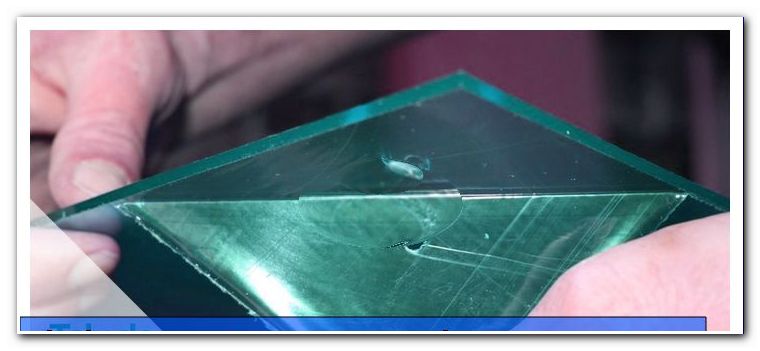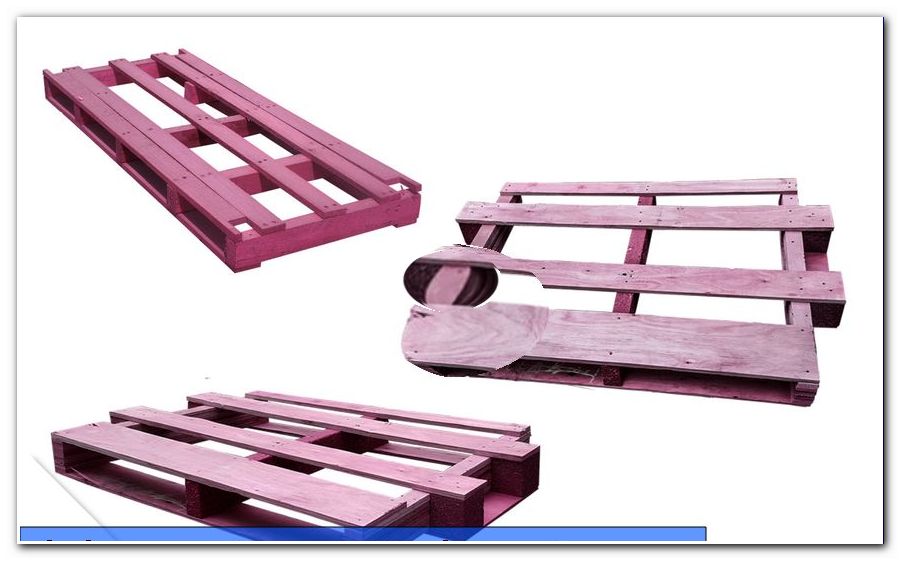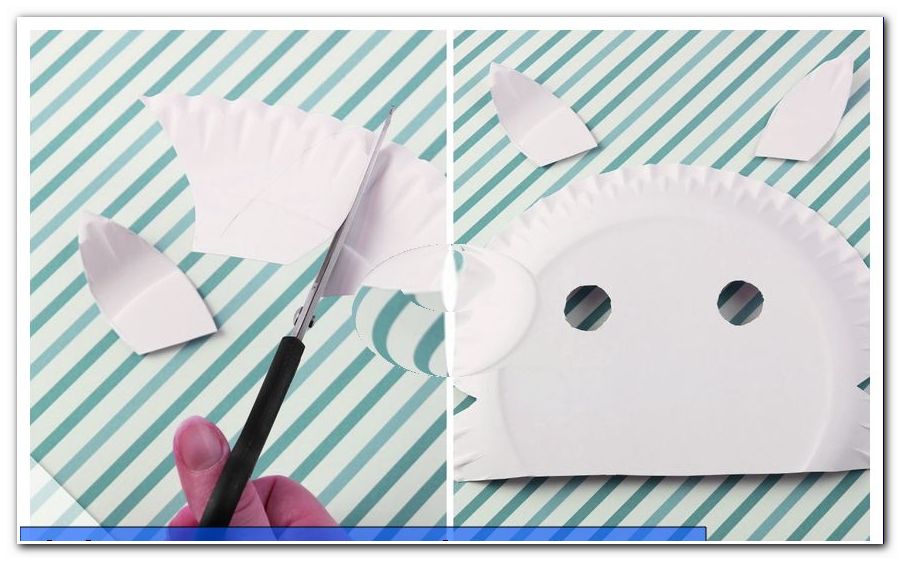Plexiglas bending - Instructions for deforming acrylic glass

- Deforming with the help of the oven
- Auxiliary device for deforming the acrylic glass
- Deforming with the help of a hot air blower
- Step by step
- frequently asked Questions
Acrylic glass is used for many different jobs and can be processed easily. By the right procedure, you can bend the material and thus bring it into the right shape. In our guide you will learn how to best deal with this and what you need to consider at work.
The advantages of Plexiglas are its high stability. It is insensitive to shocks and is therefore often used as a substitute for glass. They cut the material to the right shape and can glue several elements together. Added to this is the possibility of deformation. After heating, bend the plates into the desired shape and thereby realize cylinders or waves. After cooling, the new shape is retained and you can continue to process the components.
Deforming with the help of the oven
Due to the heat softens the material and can be brought into the appropriate shape. For the execution you need the following utensils:
- Oven, which reaches a temperature of about 170 degrees
- Rust (well cleaned)
- Gloves, as the plate gets hot
- Clamping device for creating a uniform rounding (construction is described in this guide)

- Step: First you have to remove the protective foil.
- Step: If the plate has a one-sided coating, then it is important with which side the acrylic glass later points upwards in the oven. In this case, the colored film rests on the uncoated side (the underside).
- Step: The oven oven must be thoroughly cleaned. Remains would remain, then they would press into the material and remain as residues on it.
- Step: Place the Plexiglas plate on the grate with the bottom facing down.
- Step: Let the acrylic sheet in the oven warm for a few minutes. The duration depends on the thickness of the plate. As a rule of thumb, the following formula applies:
The thickness of the plate in millimeters is equal to the residence time of the Plexiglas plate in the oven.
3 mm plate = 3 minutes in the oven
- Step: Now the material is freely malleable and you can create the desired shape.

Tip: The bending direction determines whether the material is transparent or not in the case of a coated side. If the coated side is down at a generated rounding, then the material remains transparent.
You can not only bend the Plexiglas but also bring it into all sorts of shapes. The high temperature makes it soft and can also be deformed flat. It is easy to model and therefore usable for various projects. If you want to create an even curve, then you should work with a tool: clamp the plate so that it is brought into the desired shape and held.
Auxiliary device for deforming the acrylic glass
Example: You work with a 50 centimeter long plate and want to make a half cylinder with a diameter of 20 centimeters. Then you need a board that is more than 50 inches long and more than 26 inches wide. The slats should also be more than 50 inches long. For use, you also need 4 clamps to fix the curved plate.
Step 1: Two of the slats are now screwed onto the board. They are first placed lengthwise on the board and close with the outer edges ideally flush. In any case, they are on the outside of the board.

Step 2: The two remaining slats are not screwed down. They stay loose.
How to use the auxiliary device when deforming the plexiglass
- Bring the acrylic glass into the desired half-cylinder shape and place the plate face down on the plate (the straight sides face down).
- The sides of the plate bump against the screwed wooden slats.
- Slide one of the two loose slats against the inner edge of the plate.
- Fix the curved plate between the two wooden slats and attach two clamps on each side. Now you can release plate and it remains in the desired position.

Deforming with the help of a hot air blower
Even a hot air dryer can produce a high temperature and you can deform the Plexiglas sheets. However, in this case, the thickness of the plates should not exceed 5 millimeters. It is important to heat the plate sufficiently, otherwise it may break. The advantages of the hot air dryer are the high heat development and the precise control options. They specifically warm certain areas and can thus work effectively. 
Step by step
- Step: Use an elongated nozzle. This is much better suited than a round or point nozzle.
- Step: Clamp a 4-edged pipe in a vise. This device later serves to bend the plate over the tube. You get a straight edge and can thus work neatly and create a right angle. In order for the resulting edge to succeed, the base must also have a right angle. It is also important that the pad can not deform due to the heat.
- Step: Remove the protective film from the plate. You can use the hot-air blower to shape both clear and colored Plexiglas.
- Step: Tighten the plate with the clamps on the tube. Make sure that the edge you want to bend is exactly over the edge of the pipe. The plate must be flush with the edge of the tube.
Tip: You can use wood for clamping. Metal could heat up too much and thereby transfer the heat to the plate unintentionally. This would result in undesirable deformations and the result would be adversely affected. The storage of heat in the metal could also lead to side effects and influence the meterability of the heat.
Remove any plastic caps or rubber caps from the screw clamps. They, too, would be harmed by the heat. In addition, it would lead to the development of toxic fumes.
- Step: Attach another screw clamp to the plexiglass with a matching piece of wood. The screw clamp serves as a bending lever.
Tip: Test if you can push the wood and the clamp down. There must be no obstacles on the way that would lead to a blockade. Keep a small gap between the wooden boards.
- Step: Attach the hot air blower to the gap. Now you have to heat the plate evenly. Therefore, guide the hot air blower over the opening from one side to the other and repeat this process several times.
Tip: It is crucial to find the right heat. The material must not be too hard or too soft. Check regularly the effect and work slowly and carefully.
- Step: Once the right temperature has been reached, you can start bending. For this, leave the hair dryer on the plate and pull the bending lever with the second hand. Pull it slowly down. Do not work with too much force, otherwise the material may break.
You must not direct the hair dryer to a specific location for too long, as this would lead to excessive heating and uncontrollable deformation. On the other hand, you must not pull too hard on the bending lever, as the plate can break otherwise.
Tip: You can also work together, one person heats the plate, the other person deforms the material. Experience has shown that the bending process should take about 2 minutes.
At the beginning it is recommended to practice the deformation first on a leftover piece of Plexiglas. If you heat the glass too little, then fine cracks may form or the material breaks. Excessive heat causes air bubbles, which negatively influence the appearance even after cooling.
- Step: Now loosen the screw clamps and remove the acrylic glass. Make sure that the material has cooled down sufficiently, which is usually relatively fast.
frequently asked Questions 

When do I use the oven and when do I use the hot air dryer ">
When should I use a bending machine to deform?
In the specialized trade already finished bending machines are offered, which are particularly suitable, if you often want to work on Plexiglas or have a larger plate. The bending machine uses a heating wire, which also generates heat. The advantage is the high precision because the wire is relatively thin. They clamp the Plexiglas plate into the bending machine and can thus easily bring plates of more than one meter into the correct shape. Thus, the bending machine is suitable when working with larger materials.
Tips for quick readers:
- heat in the oven
- Oven allows flat deformation
- heat with the hot air blower
- Hot air blower for right angles
- use a professional bending machine
- Bending machine for large plates
- Bending machine works with heating wire
- wear gloves
- do not overheat
- do not heat too little
- too hot: bubbles form
- too cold: material breaks or cracks develop





